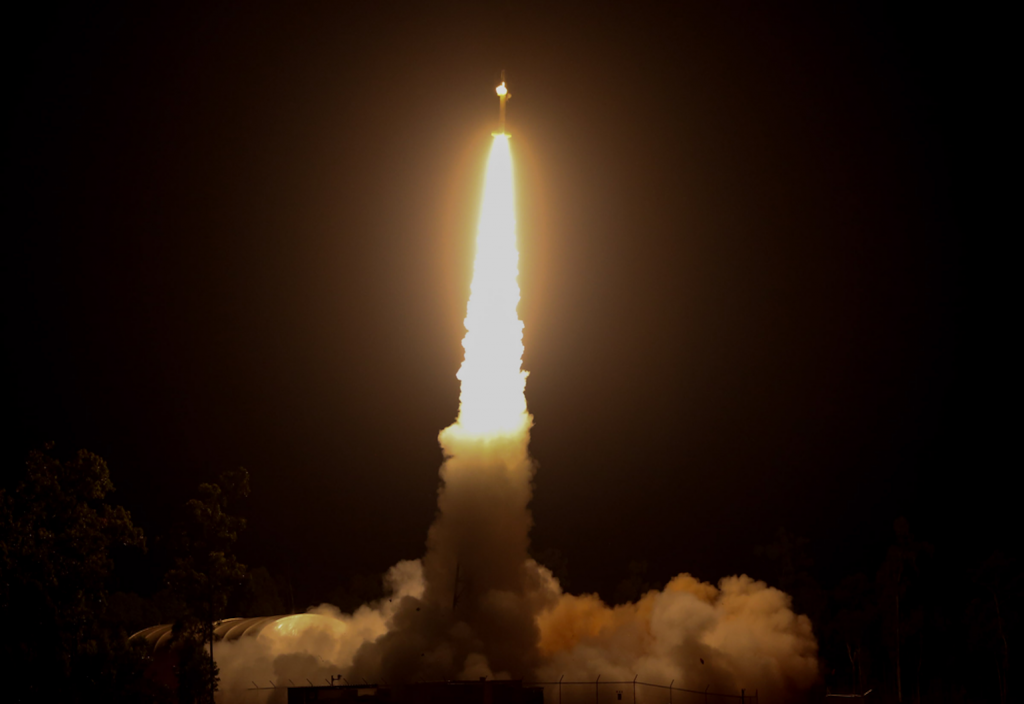When the first of three NASA rockets were launched from a commercial launch pad in the remote Northern Territory, it was a small step for science but a giant leap for Australian engineers.
There was something particularly elegant and refined about the development of the commercial space launch company Equatorial Launch Australia (ELA), says Roger Franzen HonFIEAust CPEng, Chair of Engineers Australia’s National Committee for Space Engineering. That was because it was all about deep research and solid engineering.
“I’ve been associated on the periphery of that project for some time,” Franzen, also a consultant to Defence Space Command, says.
“[ELA] very methodically and carefully planned the capability within their own team, and with advisors, to execute in the most effective way.
“The consequence of that is the people at NASA, who needed a site in the southern hemisphere, saw that as proper, professional preparation. They were assured the process would be successful and were confident they could invest in executing these missions from ELA’s launch site in Nhulunbuy.”
All three launches of NASA suborbital-sounding rockets — vehicles about 13 m tall — have been completed.
The launches attracted a great deal of media coverage, not just because of the age-old obsession humanity has with the stars but also because NASA hadn’t launched any type of rocket from Australian soil for more than 25 years.
It is considered a significant step for Australian engineers, whose expertise will be increasingly required as the Australian space industry looks towards the stars.
Rocket two launching into space. Video supplied by Equatorial Launch Australia.
Engineers in space
“This is the first time NASA has launched from Australia since 1995,” says space systems engineer Katherine Bennell Pegg, Director of Space Technology at the Australian Space Agency.
“It’s the first time NASA has launched from a commercial facility outside the US, which shows tremendous trust and goodwill. ELA provided the spaceport facility and service, which in itself involves a lot of engineering. Engineers have had to develop the launch pads and all of the other facilities to enable operations and other associated services.”
The value chain that feeds the space industry is promising, but sparse in Australia.
“Our sector’s ability to realise the tremendous opportunities across all our space activities can be accelerated through streamlining access to the full value chain — including a launch from Australia,” Bennell Pegg says.
“Australia is an incredibly attractive launch destination — we have a unique, clear view of the sky, desirable geography for targeted orbits, wide-open ranges and long coastlines, and responsible regulations. And Australian engineers are developing spaceports, launch vehicles and launch technologies here at home too.”
As the number of launches increases, as different types of rockets are launched and as mission goals become bolder, that industry will scale exponentially.
“These recent missions have been suborbital, which means the rockets go up into space, but don’t have enough energy to stay in orbit, so they fall back to Earth,” says Adam Gilmour, co-founder and CEO of Gilmour Space Technologies.
“That’s fantastic for certain types of science missions, but the bulk of the business in space is in orbit. We’re currently developing an orbital vehicle, and I’ll quote Elon Musk as saying orbit is 10,000 times harder than sub-orbit. It’s going to require significant engineering.”
The Nhulunbuy launch, Gilmour says, was another step forward for Australia’s growing space industry.
“Five years ago, when there was no Australian Space Agency, the rules on launch were absolutely Draconian,” he says. “To even consider a launch, you had to be primed with $100 million to even set up a launch site. So anybody who has built a launch site has gone through a heck of a lot of pain.”
“We’re doing it in Queensland, ELA has done it in the Northern Territory. The fact that they got a launch approval is a big step forward for everybody. It means all the regulatory stuff is done. It’s a really good example of collaboration with foreign nations and with foreign space agencies.”
A model of inclusion and sustainability
Several major space-focussed investments were announced in the latest federal budget, including a $1.16 billion project to design, build and operate four Earth Observation satellites. Those in the sector see only massive growth and opportunity.
However, they are also enormously proud of the way the sector has gone about its business, so far.
“Instead of planning something and then using the sledgehammer of legislation to force acceptance, ELA has worked hand-in-glove from day one, with the Indigenous community,” Franzen says.
“The local indigenous communities have been brought along on the entire journey and, as a result, they are now just as invested in the success of this program as anyone else.”
“On the site near Nhulunbuy, a disused bauxite mine, ELA had significant power, data, communications and other infrastructure in place. Just as importantly, they had a trained workforce able to operate all of that civil infrastructure. There were so many advantages, not least of which were excellent, pre-existing site infrastructure and an Indigenous workforce. That workforce is now being brought up to a higher level of skills, and that’s good for everybody.”
